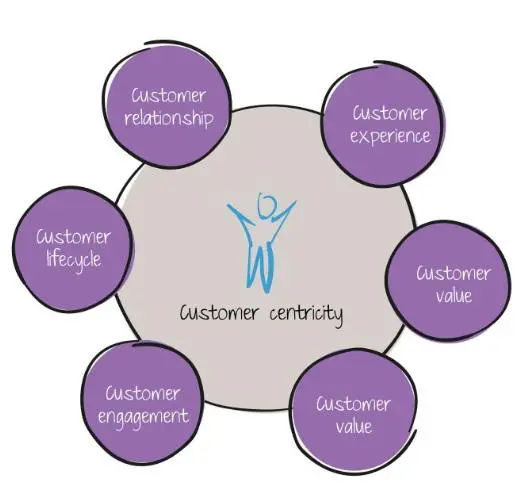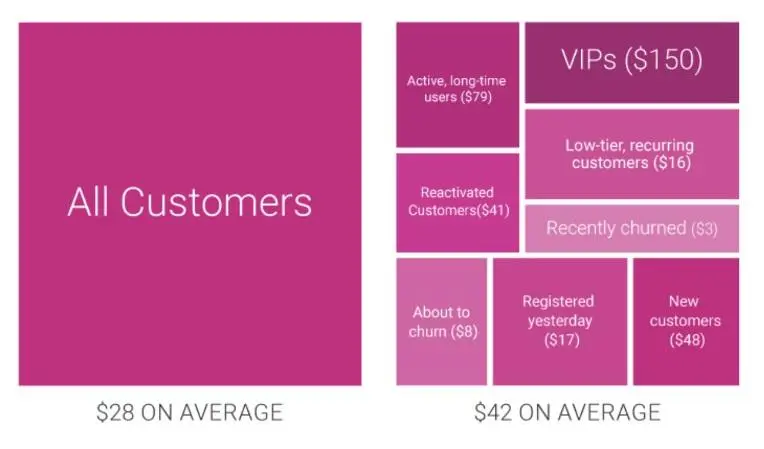How to Create a Client-Centric Strategy for Your Business
A client-centric strategy is more than just words on a page. A true client-centric strategy puts your customers at the center of every business decision.
There may be times when putting your customers first in every situation may feel counterintuitive and may even go against some traditional cost-cutting measures. However, putting your customers first leads to more customer satisfaction and loyalty, which leads to sales growth and more profits.
Keep reading to explore six strategies you can use to create a client-centric strategy for your business.
Key Takeaways
- A client-centric strategy should encompass every department and every employee in your business.
- Asking your customers relevant questions can help you understand your clients’ wants and goals.
- Giving your employees the power to satisfy your customers is crucial to a successful client-centric strategy.
What Is a Client-Centric Strategy?
A client-centric strategy puts the wants and needs of your clients at the forefront of every business decision. This strategy should include every department, like sales, marketing, and finance and every position in your business, from entry-level positions to top C-level executives.
If only some departments and positions are on-board, your customers will not benefit from a comprehensive client-centric strategy. As a customer-focused company, all policies and processes should focus on what best serves your customers.

To further clarify a client-centric strategy, we will offer a few examples of what it isn’t. Think about the times you’ve received poor service from a business and felt like you were the lowest priority. For example:
- A cable technician not showing up after you take the day off and wait for hours.
- An airline company charging outrageous fees for changing your flight after a family emergency.
- A company putting you on hold, transferring your call multiple times and then disconnecting without addressing your problem.
- A company upselling you on expensive products that don’t meet your needs.
These companies are ignoring their customers’ needs, budgets, and plans. If these made-up businesses wanted to be more client-centric, these scenarios might look more like this:
- A cable company schedules a distinct service window that works around your schedule. The service technician calls when they are on their way to your home.
- An airline that doesn’t charge you an extra fee for changing your flight.
- A company uses an omnichannel service strategy to address your issues quickly and seamlessly.
- A company suggesting less expensive products because they better suit your needs.
In these situations, the customer is the priority.
6 Client-Centric Strategies to Add to Your Business
If you want to add a client-centric strategy to your business, try these six tips.
1. Make It a Company-Wide Effort
If only your customer-facing employees were more client-centric, you would not be a client-centric business. Low-level employees may feel like they have no power to make real changes when upper management is not on the same page.
With a company-wide effort to focus on customers, your business will develop a customer-centric culture. In this environment, it will become second nature to evaluate every decision from the customer’s perspective.
Even technical roles, like engineers and programmers, should spend time with the customer service team to hear directly from customers who use the products and programs they designed. Doing so can influence future designs and software updates to make them more customer friendly.
2. Get to Know Your Customers
Even if your customers are other businesses, you should still spend time getting to know them. Your business customers have needs, budgets, and problems to solve. Try to understand your customers individually as well as at the industry level.
An important step in getting to know your customers is asking them questions. As your team members interact with customers, coach them to ask relevant questions that help your business deeply understand your customers’ concerns and goals.
Give the data and information you gather to your sales team to make them better prepared when contacting clients and prospects. Doing so will help them recommend the ideal products and services tailored to the customers’ needs.
3. Hire the Right Team
When implementing a client-centric strategy, you may find some employees who struggle or resist these changes. As you hire new employees, make sure they share the same goals and values as you do. Employees who are enthusiastic about customer success will be the ideal fit for your new client-focused company mindset.
4. Pay Attention to Details
Major problems are nearly impossible to ignore, while your business can push minor issues aside. A customer-focused business will pay attention to both major problems and minor issues. If your customers routinely say, “I love this (product or service) except for…” pay attention to that last part.
Solving minor inconveniences and going the extra mile to please your customers sets customer-focused businesses apart from the crowd.
5. Empower Your Employees
Employees who feel respected and valued are more likely to value and treat your customers with respect. They are also more likely to stick around longer, reducing your turnover rate and recruitment and training costs.
One way to treat your employees well while promoting your client-first strategy is to give employees the power they need to help your customers. For example, if a customer is speaking with a customer service representative and is unhappy because a package never arrived, give your employees the power to issue a refund or create a new duplicate order.
Amazon is a good example of a company known for letting its employees do what it takes to put their customers first.
6. Personalize the Customer Experience
Today’s customers expect a personalized experience when interacting with businesses. Offering a personalized experience could be as simple as sending a thank you after they make a purchase and including resources on how to best use what they bought.
You can also add personalization to your marketing materials to make them more relevant. For example, if you segment your customers into specific groups and then personalize email messages for each group, you may get a better return on your investment while delivering more relevant information to your customers.

Televerde Will Make Your Clients a Priority
If you need a partner in your customer care strategy, Televerde is ready to offer you and your customers the necessary services. We are experts at providing client-centric service for sales, marketing, and the customer experience.Ready to start a conversation about your customers’ needs? Contact Televerde today to get started.



